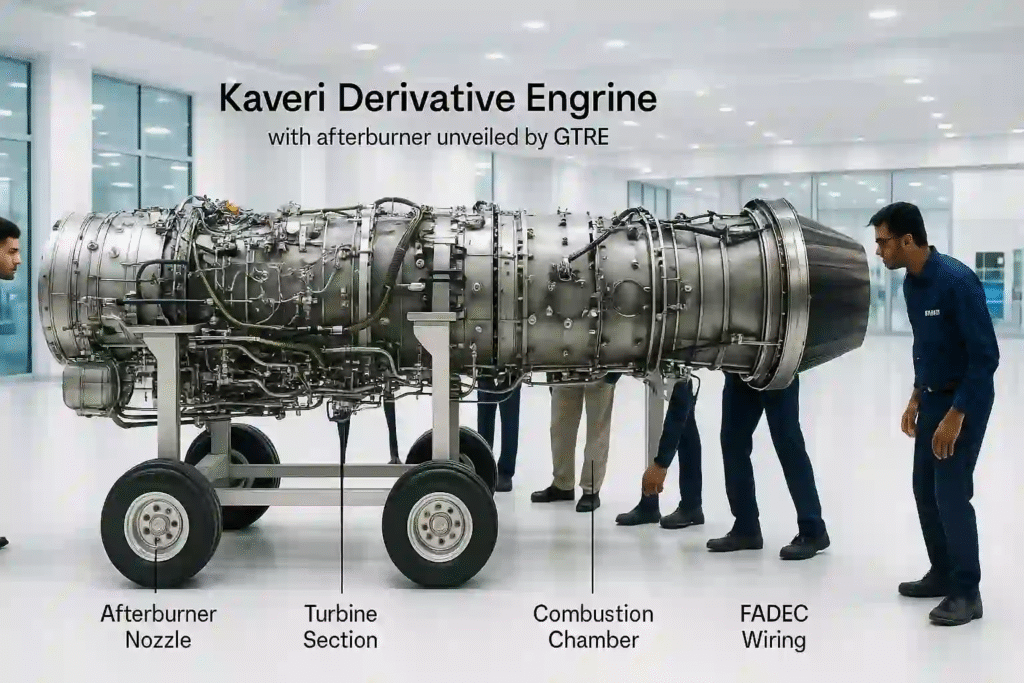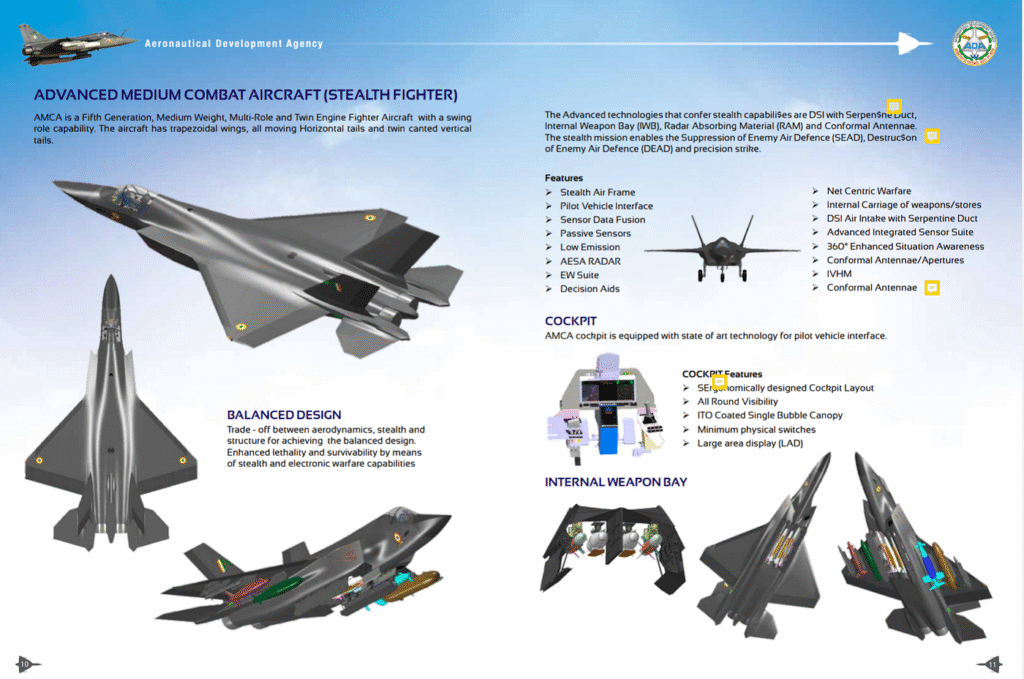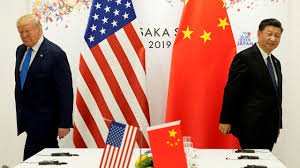Introduction to India’s Fighter Jet Engines Vision:
India is making a monumental $7.44 billion (Rs654 billion) investment in fighter jet engines to propel its ambitious fighter aircraft programs through 2035. Spearheaded by SV Ramana Murthy, director of India’s Gas Turbine Research Establishment (GTRE), this initiative aims to develop approximately 1,100 fighter jet engines for platforms like the Tejas Light Combat Aircraft (LCA) and the Advanced Medium Combat Aircraft (AMCA). This article explores the strategic importance of this investment, the challenges of developing indigenous fighter jet engines, the ecosystem required, and the transformative impact on India’s defense and economy.

Why India Needs Indigenous Fighter Jet Engines
India’s reliance on imported fighter jet engines, such as the General Electric F404 for the Tejas LCA, has long posed strategic and economic challenges. The Kaveri engine program, launched decades ago, aimed to deliver a home-grown solution but has been hampered by technical issues. The $7.4 billion investment is a bold step toward achieving self-reliance in fighter jet engines, aligning with India’s “Make in India” initiative to boost domestic manufacturing and reduce foreign dependency.
Key Benefits of Indigenous Fighter Jet Engines
- Strategic Autonomy: Reduces reliance on foreign suppliers, enhancing national security.
- Economic Growth: Stimulates job creation and innovation in the defense sector.
- Global Leadership: Positions India as a competitive player in the aerospace industry.
This investment is a cornerstone of India’s vision to become a self-sufficient defense powerhouse.
Challenges in Developing Fighter Jet Engines
Developing fighter jet engines is a highly complex endeavor requiring advanced technology, significant funding, and specialized infrastructure. The Kaveri engine, intended for the Tejas LCA, has faced persistent challenges, including insufficient thrust, overheating, and reliability issues. Murthy emphasized the need for a “mission mode” approach to overcome these obstacles and build a sustainable ecosystem for fighter jet engine production.
Major Challenges Include:
- Technological Complexity: Fighter jet engines demand high thrust-to-weight ratios, fuel efficiency, and durability under extreme conditions.
- Lack of Infrastructure: India needs high-altitude testing facilities to simulate real-world flight scenarios.
- Supply Chain Gaps: Advanced materials like titanium alloys and ceramic composites are critical but currently limited.
- Skilled Workforce: A shortage of aerospace engineering expertise hinders progress.

Strategic Impact of the $7.4 Billion Investment
The $7.4 billion allocation for fighter jet engines will support a range of fighter aircraft programs, including the Tejas LCA, AMCA, and other emerging platforms. This investment is poised to deliver significant strategic and economic benefits:
- Enhanced Defense Capabilities: Indigenous engines will strengthen the Indian Air Force’s operational readiness.
- Cost Efficiency: Domestic production will reduce long-term reliance on costly imports.
- Global Market Potential: Success could enable India to export fighter jet engines, boosting its defense industry.
For more insights, explore India’s Defense Modernization Plans (DoFollow).
The Tejas LCA and AMCA Connection
The Tejas LCA, a lightweight multirole fighter, and the AMCA, a fifth-generation stealth fighter, are central to India’s defense strategy. Currently, the Tejas relies on imported engines, which limits strategic autonomy and increases costs. The Kaveri engine was designed to power the Tejas but has not yet met operational standards. The $7.4 billion investment aims to resolve these issues, enabling indigenous fighter jet engines to power both the Tejas and AMCA, ensuring cutting-edge performance and stealth capabilities.

Building a Fighter Jet Engines Ecosystem
To achieve its ambitious goals, India must create a comprehensive ecosystem for fighter jet engines. This involves multiple components, each critical to the program’s success:
1. Research and Development (R&D)
Increased funding for GTRE and other research institutions is essential to drive innovation. Collaborations with global firms, such as Safran (France) or Rolls-Royce (UK), could provide access to advanced technologies while prioritizing indigenous development.
2. Infrastructure Development
India lacks critical facilities like high-altitude testing centers and advanced simulation labs. The government must prioritize investments in these areas to support rigorous testing and validation of fighter jet engines.
3. Public-Private Partnerships
Engaging private companies like Hindustan Aeronautics Limited (HAL) and Tata Advanced Systems can accelerate production and leverage industry expertise. These partnerships can also attract foreign investment and technology transfers.
4. Workforce Development
Training programs for engineers, scientists, and technicians are vital to build a skilled workforce capable of meeting the demands of fighter jet engine manufacturing. Universities and technical institutes must align curricula with industry needs.
5. Supply Chain Enhancement
Developing a robust supply chain for advanced materials, such as high-temperature alloys and composites, is critical for large-scale production. This requires collaboration with domestic and international suppliers.
Murthy’s “mission mode” approach underscores the urgency of these efforts. A well-coordinated ecosystem will ensure the long-term success of India’s fighter jet engine programs.
For more on the Tejas program, visit India’s Tejas LCA Program.
Global Context: India in the Aerospace Race
India’s investment in fighter jet engines comes at a time when global defense dynamics are rapidly evolving. Countries like the United States, Russia, and China have made significant strides in engine technology, setting high standards for performance and reliability. India’s success in developing indigenous fighter jet engines could position it as a key player in the global defense market, potentially enabling exports to allied nations.
Opportunities for Collaboration
Strategic partnerships with global defense firms could accelerate India’s progress. For example, Safran has previously collaborated with India on helicopter engines, and similar partnerships could benefit the fighter jet engines program. These collaborations must balance technology transfers with India’s self-reliance goals.
Explore global defense partnerships at Janes Defence News (DoFollow).
Economic and Strategic Implications
A successful fighter jet engine program will yield far-reaching benefits:
- Economic Growth: Stimulate industries like manufacturing, materials, and technology, creating thousands of jobs.
- Strategic Autonomy: Enhance India’s ability to address regional security challenges independently.
- Export Potential: Position India as a supplier of advanced fighter jet engines to global markets.

Overcoming Technical Challenges
The Kaveri engine’s struggles highlight the need for innovation in fighter jet engine technology. Key areas of focus include:
- Thrust Optimization: Achieving higher thrust-to-weight ratios to meet modern fighter jet requirements.
- Thermal Management: Developing advanced cooling systems to prevent overheating during high-performance operations.
- Material Science: Utilizing lightweight, durable materials like ceramic matrix composites for enhanced performance.
- Reliability Testing: Ensuring engines can withstand extreme conditions over extended periods.
Investments in these areas will be critical to overcoming the Kaveri program’s shortcomings and ensuring the success of future fighter jet engines.

The Road Ahead: Milestones for 2035
To achieve its 2035 goals, India must establish clear milestones for its fighter jet engines program:
- 2025-2028: Develop prototype engines with improved thrust and reliability.
- 2028-2032: Establish high-altitude testing facilities and scale up production capabilities.
- 2032-2035: Integrate indigenous fighter jet engines into Tejas, AMCA, and other platforms.
These milestones will require sustained government support, private-sector collaboration, and international partnerships.
Conclusion
India’s $7.4 billion investment in fighter jet engines is a transformative step toward self-reliance and defense modernization. By addressing technical challenges, building a robust ecosystem, and fostering global collaborations, India aims to power its fighter aircraft with indigenous engines by 2035. This initiative will not only strengthen the Indian Air Force but also position India as a global leader in aerospace technology, driving economic growth and strategic autonomy.
For further reading, explore India’s Defense Budget 2025.


